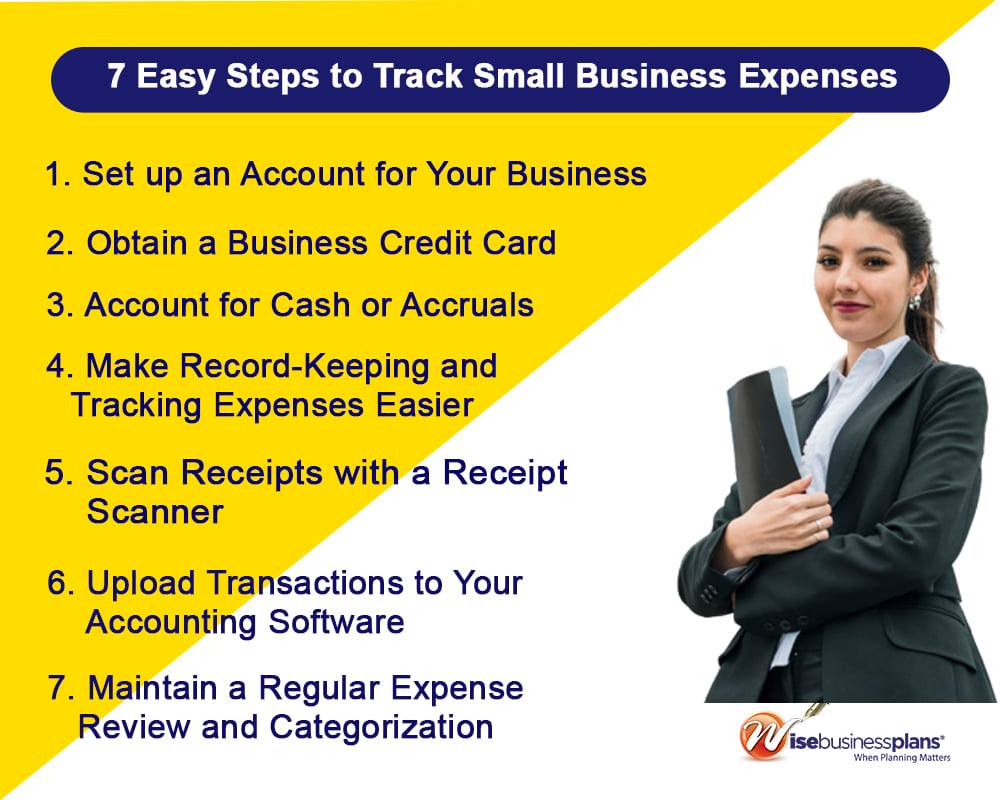How To Track Business Expenses
Table of Contents
- 7 Easy Steps to Track Small Business Expenses
- 1. Set up an Account for Your Business
- 2. Obtain a Business Credit Card
- 3. Account for Cash or Accruals
- 4. Make Record-Keeping and Tracking Expenses Easier
- 5. Scan Receipts with a Receipt Scanner
- 6. Upload Transactions to Your Accounting Software
- 7. Maintain a Regular Expense Review and Categorization
- FAQs:
Carrying too much debt is dangerous to the health of your small business. The best business owners will have problems if they let their debt-to-equity ratio get out of hand. This simply means that you are moving toward owing more to creditors than you can cover through the profits and holdings in your business.
If you find that you are in such a situation, it is time to turn things around as quickly and painlessly as possible. Ideally, you want to build up your business instead of paying late fees and higher interest rates to creditors.
One of the first and most effective options is to review your small business expenses and cut back as much as you can while keeping your company running smoothly. Every dollar not spent is a dollar that can be put toward lowering your debt and making your future more secure.
7 Easy Steps to Track Small Business Expenses
Small business leaders should follow these steps in order to effectively track and manage expenses:

1. Set up an Account for Your Business
Among companies with excellent financial health, more than 60% created a budget and a separate payroll bank. Separate accounts can be useful for tracking business expenses and for claiming them later as tax deductions.
Only 5% of companies with poor financial health used separate accounts. To open a business bank account, a business must have its federal employer identification number (EIN). Sole proprietors can use their social security numbers.
2. Obtain a Business Credit Card
If a business has its own credit card, it can establish a credit history so it can receive financing (and get the best financing terms) when it needs it. It can also make big purchases when it is just getting started.
Credit cards offer perks for businesses, such as rewards programs and travel benefits, such as helping them negotiate favorable deals with suppliers and protecting them from identity theft.
3. Account for Cash or Accruals
In addition to providing a consistent accounting method for tax purposes, every small business must determine when to report income and expenses.
Because cash basis accounting records the transaction when the payment is received, it can be more straightforward and easier to manage for small businesses. Accrual basis accounting records the transaction on the books after it is completed, and allows the business to take the deduction in the tax year in which it was incurred.
4. Make Record-Keeping and Tracking Expenses Easier
According to Robert Half’s survey, 58 percent of U.S. financial and accounting decision-makers now use cloud-based solutions in part or exclusively. They make tracking, organizing, and paying expenses simple, whether it is a supplier invoice, rent payment, or payroll. They can reduce the time spent tracking expenses and increase the accuracy of this information.
5. Scan Receipts with a Receipt Scanner
Accountants or business owners can scan receipts using the camera on their phones using certain accounting applications. Software in each uses OCR technology, which turns text into machine-readable code. Buying a separate receipt scanner, however, enables organizations to scan documents, review them and categorize them.
6. Upload Transactions to Your Accounting Software
Business software allows small businesses to integrate with their banks in different ways. Businesses can download credit card and bank statements and manually import them as CSV (Excel) files.
Several accounting software systems offer direct integration to banks, allowing business owners to manage and complete all banking in the accounting system without having to log into their bank accounts.
7. Maintain a Regular Expense Review and Categorization
In order to grow and survive, a small business must review its numbers frequently and understand them well. Looking at expenses and related metrics is a crucial part of understanding the current and near-term financial health of an organization.
By tracking business expenses, employers will be able to make better or more informed decisions for day-to-day or month-to-month operations, improved decision-making for employees and customers, and long-term success.
FAQs:
Tracking business expenses is essential for several reasons. It helps you monitor your cash flow, maintain accurate financial records, prepare tax returns, identify areas of overspending or cost-saving opportunities, and demonstrate transparency and compliance in case of audits or legal requirements.
There are several methods you can use to track business expenses. Some common approaches include keeping paper receipts and organizing them manually, using spreadsheets or accounting software to record and categorize expenses, utilizing expense tracking apps or mobile tools, and integrating bank and credit card statements with accounting software for automated expense tracking.
It’s important to track all relevant business expenses to have a comprehensive financial record. This includes expenses related to purchases, inventory, utilities, rent or mortgage payments, payroll and employee benefits, marketing and advertising costs, professional services (such as legal and accounting fees), travel expenses, and any other expenditures directly related to your business operations.
To simplify expense tracking, consider implementing streamlined systems and practices. This can include setting up separate business bank accounts and credit cards for easier expense separation, utilizing automation tools for expense categorization, regularly reconciling bank statements, and keeping digital copies or scanned copies of receipts for easier organization and retrieval.
It’s recommended to retain records of business expenses for a certain period, typically at least three to seven years. This is necessary to comply with tax regulations and for potential audits. Consult with a tax professional or refer to local regulations to determine the specific record retention requirements applicable to your business.



![How to Implement Security Measures That Actually Protect Your Business [Step-by-Step Guide]](https://wisebusinessplans.com/wp-content/uploads/2025/06/how-to-implement-security-measures-that-actually-protect-your-business-1024x576.webp)












